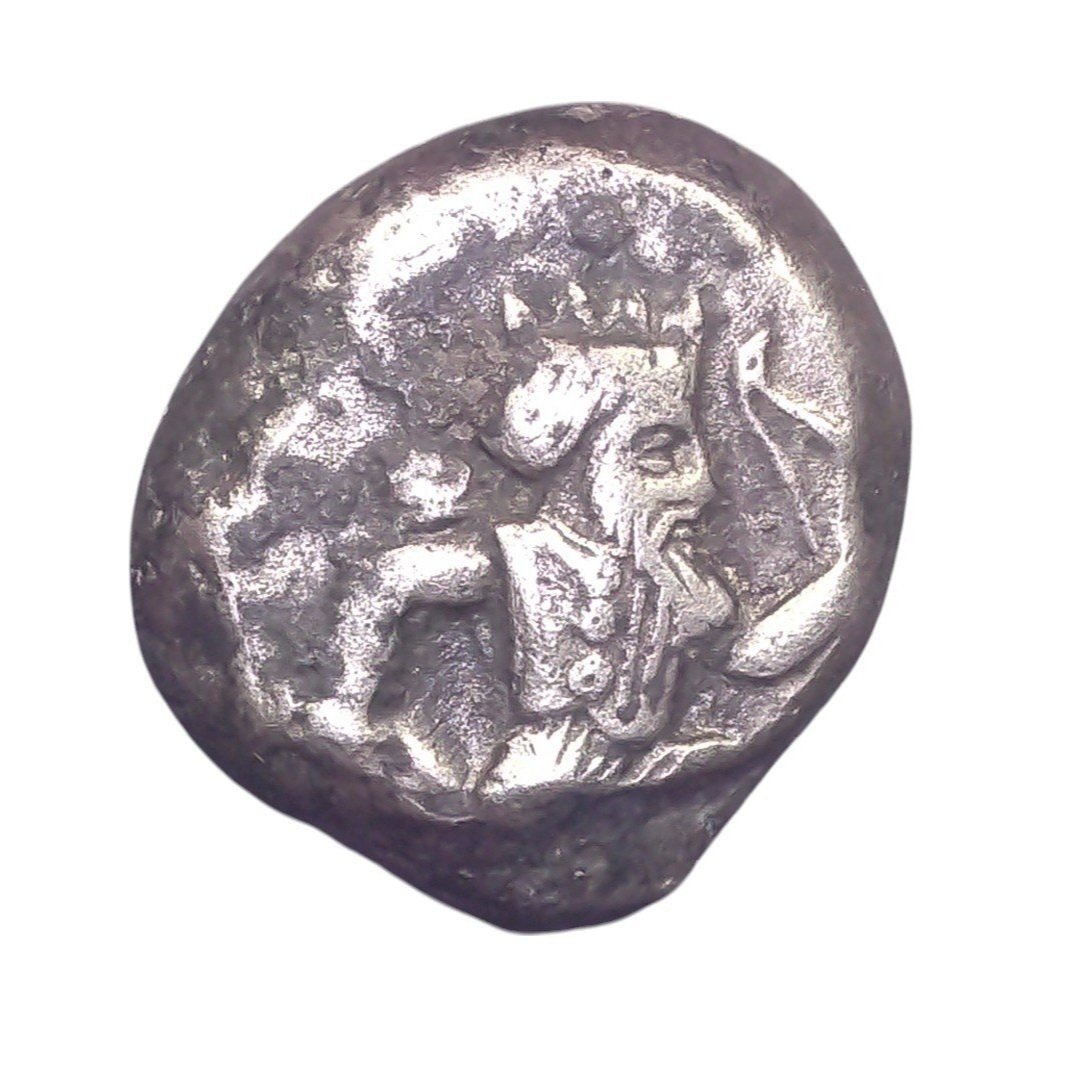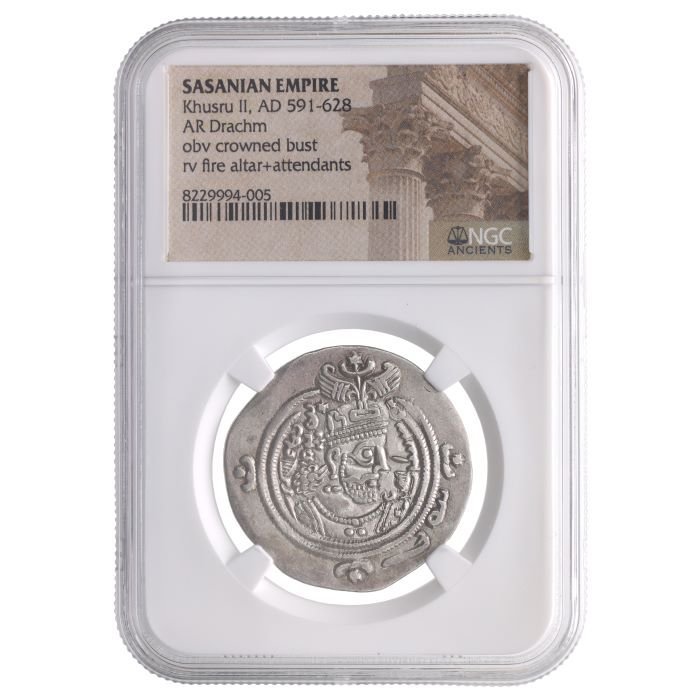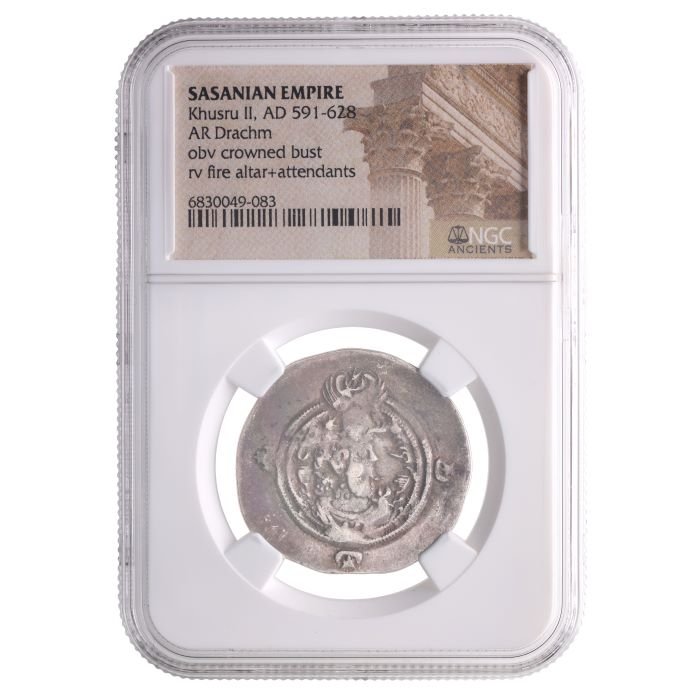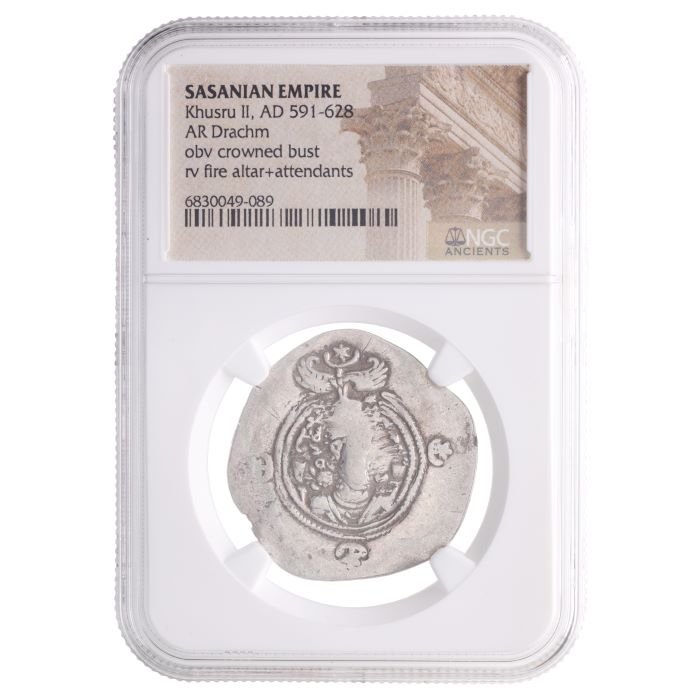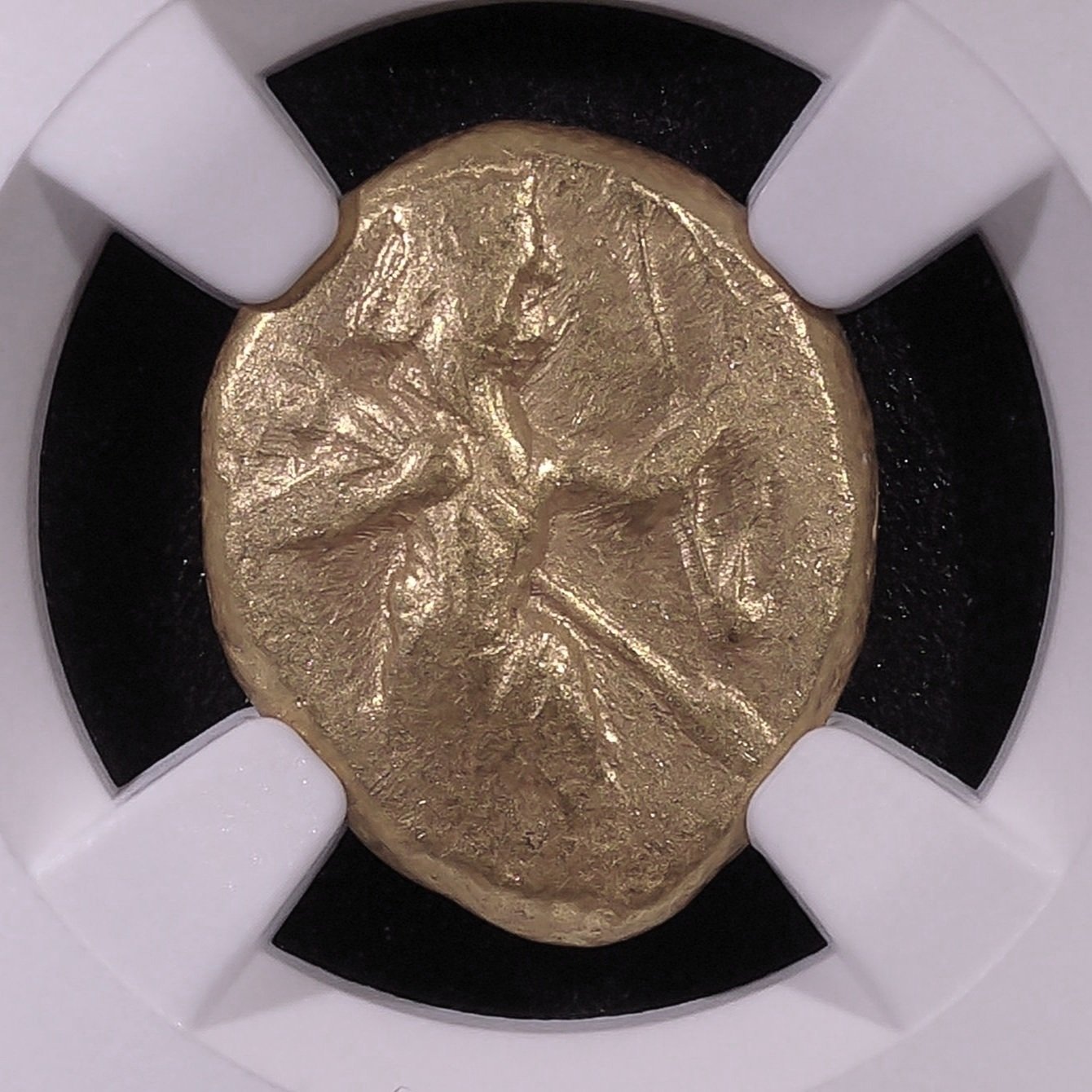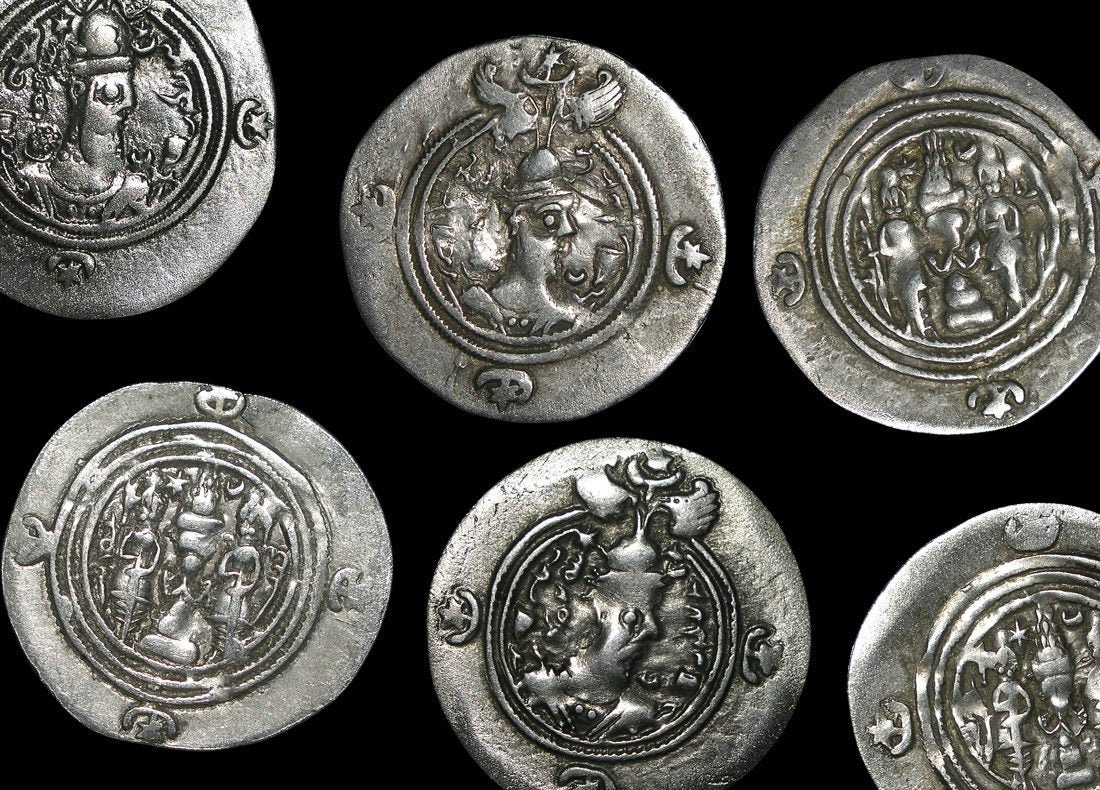Tabaristan NGC Certified Slab - Zoroastrian Dabuyid Silver Coin (about 1250 years ago)
This is a professionally graded and certified silver coin from the Dabuyid dynasty of Tabaristan (modern northern Iran), which followed the Zoroastrian religion.
Technical Details:
Format: NGC certified protective slab
Authentication: NGC certified
Note: Coin shown in images is an example only; actual coin may vary
Historical Significance: The Dabuyid dynasty ruled Tabaristan (the mountainous region south of the Caspian Sea in northern Iran) during the early Islamic period, maintaining Zoroastrian religious practices while surrounded by the expanding Muslim caliphates. Zoroastrianism, one of the world's oldest continuously practiced religions, influenced Judaism, Christianity, and Islam with concepts like heaven and hell, judgment after death, and an apocalyptic end of the world. This certified coin represents a fascinating period when Zoroastrian rulers maintained a degree of independence and religious freedom despite being surrounded by Muslim territories. Their distinctive coinage, based on Sasanian silver designs but with unique adaptations, provides tangible evidence of this culturally significant transitional period in Middle Eastern history.
This is a professionally graded and certified silver coin from the Dabuyid dynasty of Tabaristan (modern northern Iran), which followed the Zoroastrian religion.
Technical Details:
Format: NGC certified protective slab
Authentication: NGC certified
Note: Coin shown in images is an example only; actual coin may vary
Historical Significance: The Dabuyid dynasty ruled Tabaristan (the mountainous region south of the Caspian Sea in northern Iran) during the early Islamic period, maintaining Zoroastrian religious practices while surrounded by the expanding Muslim caliphates. Zoroastrianism, one of the world's oldest continuously practiced religions, influenced Judaism, Christianity, and Islam with concepts like heaven and hell, judgment after death, and an apocalyptic end of the world. This certified coin represents a fascinating period when Zoroastrian rulers maintained a degree of independence and religious freedom despite being surrounded by Muslim territories. Their distinctive coinage, based on Sasanian silver designs but with unique adaptations, provides tangible evidence of this culturally significant transitional period in Middle Eastern history.
This is a professionally graded and certified silver coin from the Dabuyid dynasty of Tabaristan (modern northern Iran), which followed the Zoroastrian religion.
Technical Details:
Format: NGC certified protective slab
Authentication: NGC certified
Note: Coin shown in images is an example only; actual coin may vary
Historical Significance: The Dabuyid dynasty ruled Tabaristan (the mountainous region south of the Caspian Sea in northern Iran) during the early Islamic period, maintaining Zoroastrian religious practices while surrounded by the expanding Muslim caliphates. Zoroastrianism, one of the world's oldest continuously practiced religions, influenced Judaism, Christianity, and Islam with concepts like heaven and hell, judgment after death, and an apocalyptic end of the world. This certified coin represents a fascinating period when Zoroastrian rulers maintained a degree of independence and religious freedom despite being surrounded by Muslim territories. Their distinctive coinage, based on Sasanian silver designs but with unique adaptations, provides tangible evidence of this culturally significant transitional period in Middle Eastern history.










